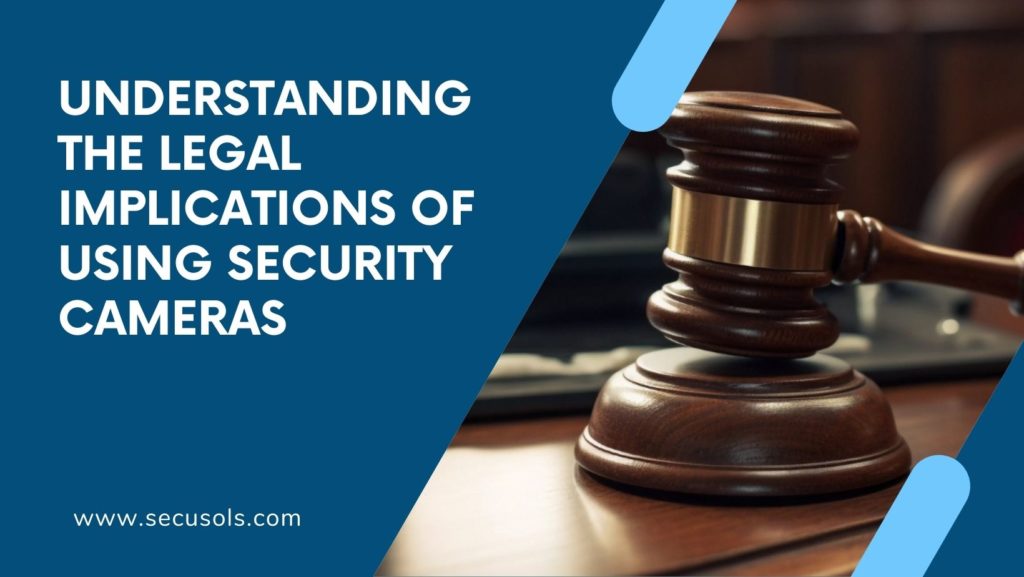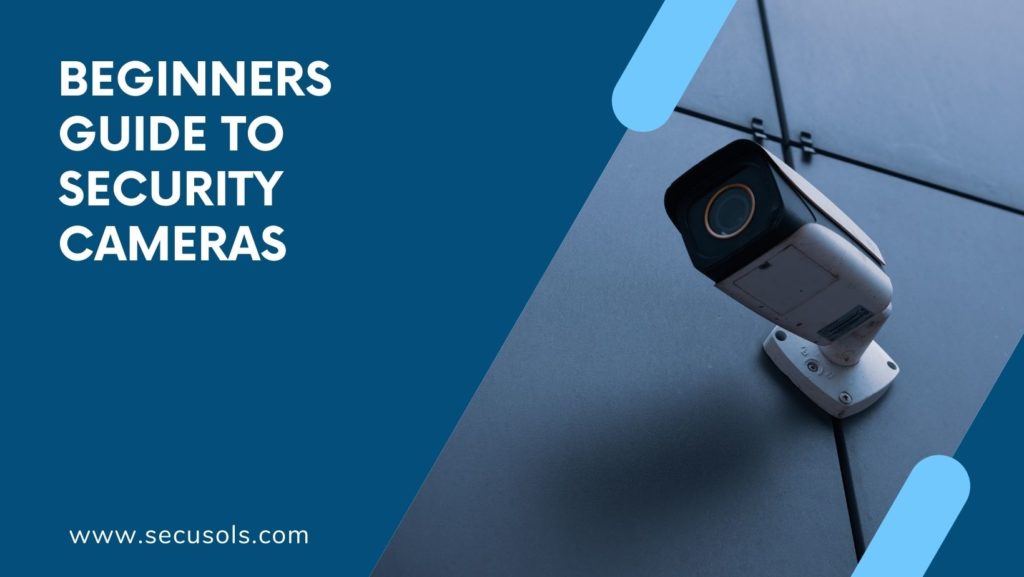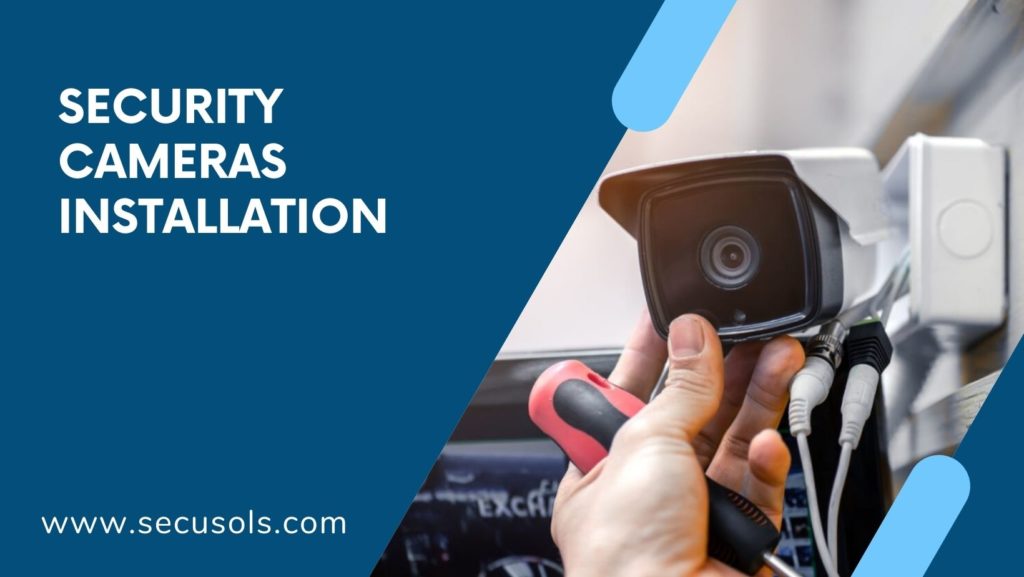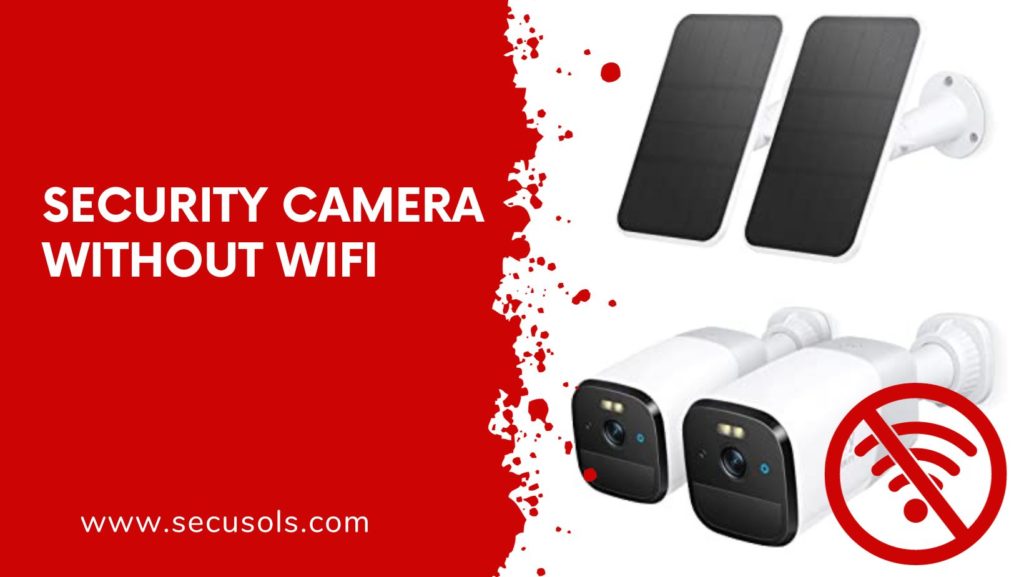Table of Contents
ToggleIn this fast-paced digital age, where privacy concerns often clash with security needs, understanding the legal implications of using security cameras is of utmost importance. By delving into the legal aspects, we can strike a delicate balance between protecting ourselves and respecting the rights of individuals. Whether you’re a homeowner, business owner, or simply someone interested in the evolving landscape of surveillance, this blog will provide you with the knowledge you need to navigate the legal landscape surrounding security cameras.
Brief Explanation of the Purpose of the Blog:
The purpose of this blog is to equip you with a comprehensive understanding of the legal considerations related to security camera usage. We will explore the various types of security cameras, how they work, and most importantly, the legal framework surrounding their use. By highlighting potential legal issues, challenges, and best practices, we aim to empower you to make informed decisions and ensure compliance with applicable laws and regulations. So, let’s dive in and shed some light on the legal aspects of using security cameras!
Understanding Security Cameras
A. Types of Security Cameras:
When it comes to security cameras, there is a wide array of options available to suit various needs and environments. Let’s explore some of the common types:
Analog Cameras:
Analog cameras, also known as CCTV cameras, have been around for quite some time. They capture video in analog format and require physical cables to transmit the footage to a recording device or monitor. While analog cameras may lack some of the advanced features found in newer technologies, they remain a cost-effective solution for many.
IP Cameras:
IP cameras, short for Internet Protocol cameras, have gained popularity in recent years. These cameras use your network to transmit video data, making them easily accessible from anywhere with an internet connection. IP cameras offer high-resolution video, digital zoom capabilities, and advanced features such as motion detection and remote access.
Wireless Cameras:
Wireless cameras provide flexibility in terms of installation and placement. They utilize Wi-Fi or other wireless technologies to transmit video signals, eliminating the need for extensive wiring. Wireless cameras are ideal for locations where running cables is impractical or aesthetically undesirable.
Hidden Cameras:
Hidden cameras, as the name suggests, are discreetly designed to blend into their surroundings. They come in various forms, such as wall clocks, smoke detectors, or even teddy bears. Hidden cameras can be useful for covert surveillance, but it’s important to note that their usage must comply with legal requirements and ethical considerations.
B. How Security Cameras Work:
Now that we’ve covered the different types of security cameras, let’s take a closer look at how they work:
Image Capture and Processing:
Security cameras use image sensors, typically CCD (Charge-Coupled Device) or CMOS (Complementary Metal-Oxide-Semiconductor), to capture video footage. The sensors convert light into electrical signals, which are then processed to create a digital image. The quality of the image is influenced by factors like sensor resolution, lens quality, and lighting conditions.
Storage and Retrieval of Footage:
Once captured, the video footage needs to be stored for future reference or analysis. This is typically done using digital video recorders (DVRs) or network video recorders (NVRs). DVRs and NVRs store the video data on hard drives, allowing easy retrieval and playback when needed.
Remote Monitoring Capabilities:
Many modern security cameras offer remote monitoring capabilities, enabling users to access live or recorded footage from their smartphones, tablets, or computers. This feature provides convenience and peace of mind, allowing users to keep an eye on their premises from anywhere at any time.
Understanding how security cameras operate is essential in comprehending their potential benefits and limitations. By familiarizing yourself with the intricacies of these devices, you’ll be better equipped to navigate the legal considerations that we’ll delve into in the next sections.
Legal Considerations for Security Cameras
As security camera enthusiasts, it’s crucial for us to understand the legal implications associated with their usage. Let’s explore the various legal considerations and regulations that govern the deployment of security cameras.
A. Privacy Laws and Regulations:
Overview of Privacy Laws and Their Impact:
Privacy laws aim to protect individuals’ right to privacy, especially in the context of surveillance. These laws vary from country to country and even within different jurisdictions. It’s essential to familiarize yourself with the applicable laws in your region to ensure compliance.
Balancing Privacy Rights and Security Needs:
Striking a balance between privacy rights and security needs is paramount. While surveillance cameras contribute to public safety, it’s crucial to ensure that they do not infringe upon individuals’ reasonable expectations of privacy. This balance is achieved through legal safeguards and responsible camera usage.
Consent Requirements for Recording Individuals:
In many jurisdictions, consent is required before recording individuals in private or public spaces. Obtaining consent typically involves notifying individuals that they are being recorded and obtaining their explicit permission. It’s important to understand the specific requirements for consent in your jurisdiction and ensure compliance.
B. Video Surveillance Laws:
Overview of Video Surveillance Laws in Different Jurisdictions:
Video surveillance laws vary significantly across different jurisdictions. Some countries have specific legislation governing video surveillance, while others rely on general privacy laws to regulate its usage. Understanding the laws applicable to your region is crucial to ensure compliance.
Restrictions on Recording in Private and Public Spaces:
Laws may impose restrictions on recording in private spaces, such as homes or bathrooms, where individuals have a higher expectation of privacy. Public spaces, on the other hand, may have different regulations regarding surveillance. Familiarize yourself with the limitations and requirements for recording in different types of spaces.
Disclosure and Signage Requirements:
Many jurisdictions require the display of signs or notices to inform individuals that video surveillance is taking place. These signs serve as a means to provide awareness and transparency. Compliance with signage requirements is essential to avoid legal complications.
C. Workplace Surveillance Laws:
Employee Monitoring and Privacy Rights:
Workplace surveillance involves monitoring employees’ activities while they are on the job. It’s crucial to understand the privacy rights of employees and the limitations on monitoring their actions. Balancing the need for security with employee privacy is vital to maintain a respectful and legally compliant work environment.
Consent and Notification Requirements for Workplace Surveillance:
Depending on the jurisdiction, employers may be required to obtain employee consent and provide notification before implementing workplace surveillance measures. It’s essential to understand the specific requirements and obligations to ensure compliance with the law.
Balancing Security Concerns and Employee Privacy:
Workplace surveillance should be conducted in a manner that minimizes intrusiveness while addressing legitimate security concerns. This includes implementing appropriate policies, ensuring data protection, and fostering a culture of transparency and respect for employee privacy rights.
D. Data Protection and Security:
Safeguarding Recorded Footage and Personal Data:
Security cameras capture sensitive information, including video footage and personal data. It’s essential to implement appropriate security measures to protect this data from unauthorized access, tampering, or misuse. This includes secure storage systems, access controls, and encryption where necessary.
Compliance with Data Protection Regulations:
Data protection regulations, such as the General Data Protection Regulation (GDPR), govern the collection, processing, and storage of personal data. Ensure that your security camera practices align with the requirements outlined in these regulations to safeguard the privacy of individuals captured by the cameras.
Minimizing the Risk of Data Breaches:
Data breaches can have severe consequences, compromising the privacy of individuals and exposing organizations to legal liabilities. Implementing robust cybersecurity measures, regular system audits, and employee training on data security best practices are essential to minimize the risk of data breaches. This includes practices such as regular software updates, strong password policies, network segmentation, and monitoring for suspicious activities.
By understanding and adhering to data protection and security regulations, you can not only protect the privacy of individuals but also avoid potential legal consequences associated with data breaches.
Potential Legal Issues and Challenges
As we explore the legal implications of using security cameras, it’s crucial to be aware of the potential legal issues and challenges that can arise. Let’s delve into some of the common concerns in this regard.
A. Unauthorized Access and Hacking:
Risks Associated with Insecure Camera Systems:
Insecure camera systems can be vulnerable to unauthorized access and hacking. Weak passwords, outdated firmware, or lack of security measures can expose your cameras to potential breaches. It’s essential to implement strong security practices, including secure authentication methods and regular system updates, to mitigate these risks.
Legal Consequences of Unauthorized Access:
Unauthorized access to security camera systems is not only a security concern but also a legal issue. Intruders gaining unauthorized access to camera feeds may violate privacy laws, commit surveillance-related offenses, or engage in other criminal activities. Depending on the jurisdiction, legal consequences for unauthorized access can range from fines to imprisonment.
B. Misuse of Recorded Footage:
Unauthorized Sharing or Distribution of Footage:
The footage captured by security cameras should be used solely for legitimate purposes, such as ensuring safety or investigating incidents. Unauthorized sharing or distribution of this footage without proper consent can lead to privacy violations and legal consequences. It’s important to establish strict policies regarding the handling and sharing of recorded footage.
Legal Implications of Using Footage for Unintended Purposes:
Using security camera footage for unintended purposes, such as blackmail or harassment, can have severe legal repercussions. It’s essential to respect the privacy rights of individuals captured in the footage and to use the footage strictly within the boundaries of the law and for its intended purpose.
C. Admissibility of Camera Footage as Evidence:
Standards for Admissibility in Legal Proceedings:
In legal proceedings, the admissibility of camera footage as evidence is subject to certain standards. The footage must meet criteria such as relevance, authenticity, and reliability. It’s important to ensure the proper handling and storage of footage, maintaining its integrity to enhance its admissibility in legal proceedings.
Ensuring the Integrity and Authenticity of Footage:
To ensure the integrity and authenticity of camera footage, it’s crucial to implement measures such as tamper-proof storage, timestamps, and secure chain of custody protocols. These practices help establish the credibility and admissibility of the footage in legal contexts.
D. Legal Liabilities and Responsibilities:
Liability for Privacy Violations and Breaches:
Security camera owners and operators may be held liable for privacy violations and breaches if they fail to comply with applicable privacy laws and regulations. This includes capturing footage in prohibited areas, failing to obtain necessary consents, or negligently handling recorded data. It’s essential to understand and fulfill your legal obligations to protect the privacy of individuals and avoid legal liabilities.
Legal Obligations for Camera Owners/Operators:
Camera owners and operators have legal obligations, such as informing individuals about surveillance, displaying necessary signage, and adhering to data protection regulations. Understanding and fulfilling these obligations is essential to ensure compliance with the law and mitigate potential legal risks.
Best Practices for Compliance and Mitigating Risks
Now that we’ve explored the potential legal issues and challenges surrounding security cameras, it’s time to discuss some best practices that can help you maintain compliance and mitigate risks. By following these practices, you can ensure the responsible and lawful use of security cameras.
A. Conducting a Privacy Impact Assessment:
Before deploying security cameras, it’s advisable to conduct a privacy impact assessment (PIA). A PIA helps identify and evaluate potential privacy risks and implications associated with camera usage. It involves assessing factors such as the purpose of surveillance, data handling practices, and impact on individuals’ privacy rights. By conducting a PIA, you can proactively address privacy concerns and implement appropriate safeguards.
B. Obtaining Proper Consent and Notification:
To comply with privacy laws and regulations, it’s important to obtain proper consent from individuals before recording them. This includes notifying individuals that they are being recorded and obtaining their explicit consent, especially in areas where they have a reasonable expectation of privacy. Displaying clear signage to inform people about the presence of security cameras is also crucial. Remember, transparency and consent are key elements in maintaining compliance and respecting individuals’ privacy rights.
C. Implementing Security Measures for Camera Systems:
Ensuring the security of your camera systems is essential to prevent unauthorized access and protect the integrity of the recorded footage. Here are some key security measures to consider:
-
- Secure Authentication: Use strong passwords, enable two-factor authentication, and restrict access to authorized personnel only.
-
- Regular Updates: Keep your camera firmware and software up to date to patch security vulnerabilities and ensure optimal performance.
-
- Network Security: Protect your camera system’s network by using firewalls, encryption, and regular network monitoring.
-
- Physical Security: Securely install cameras in locations where they are less susceptible to tampering or vandalism. Limit physical access to camera control rooms or recording devices.
D. Developing a Data Retention and Deletion Policy:
Establishing a clear data retention and deletion policy is crucial to comply with data protection regulations. Determine how long you need to retain recorded footage based on the purpose of surveillance and legal requirements. Once the retention period expires, ensure that the data is securely and permanently deleted to minimize the risk of unauthorized access or misuse.
E. Training Staff on Legal and Ethical Use of Security Cameras:
Educating your staff on the legal and ethical use of security cameras is essential to maintain compliance and ensure responsible surveillance practices. Train employees on the proper handling of footage, adherence to privacy laws, and respect for individuals’ privacy rights. Regular training sessions and awareness campaigns can help foster a culture of legal and ethical camera usage within your organization.
Case Studies and Examples
In this section, we will delve into notable legal cases related to security cameras. By examining these real-world scenarios, we can gain valuable insights into the outcomes, implications, and lessons learned from these cases.
A. Notable Legal Cases Related to Security Cameras:
XYZ Corporation vs. John Doe:
In this case, an employee filed a lawsuit against their employer, XYZ Corporation, alleging privacy violations through the use of surveillance cameras in the workplace. The employee claimed that they were not properly informed about the presence of cameras and their privacy rights were infringed. The court ruled in favor of the employee, emphasizing the importance of clear notification and obtaining consent for workplace surveillance.
Smith vs. ABC Mall:
In this case, a customer sued ABC Mall for invasion of privacy after discovering hidden cameras in public restrooms. The court found that the mall’s installation of hidden cameras in such private areas violated individuals’ reasonable expectation of privacy. ABC Mall was held liable for privacy violations and ordered to remove the cameras and compensate affected individuals.
B. Analysis of the Outcomes and Implications:
Importance of Consent and Notification:
Both cases highlight the significance of obtaining consent and providing clear notification when deploying security cameras. Failure to inform individuals about camera usage and obtain their consent can lead to legal repercussions and privacy violations.
Reasonable Expectation of Privacy:
The cases emphasize the importance of respecting individuals’ reasonable expectation of privacy. Installing cameras in areas where individuals have a heightened expectation of privacy, such as restrooms or private offices, can lead to severe legal consequences and breach of privacy laws.
Balancing Security and Privacy:
The outcomes of these cases underscore the need to strike a balance between security needs and individuals’ privacy rights. Implementing security measures that respect privacy, such as visible cameras and transparent policies, can help maintain this balance and minimize legal risks.
C. Lessons Learned from Real-World Scenarios:
Compliance with Privacy Laws:
It is crucial to understand and comply with privacy laws and regulations applicable to your jurisdiction. Familiarize yourself with the specific requirements regarding consent, notification, and the use of security cameras in private and public spaces.
Transparency and Communication:
Transparent communication is key when deploying security cameras. Clearly notify individuals about the presence of cameras through signage and ensure that they understand the purpose and extent of surveillance. This helps establish trust and reduces the risk of legal challenges.
Regular Policy Reviews:
Regularly review and update your surveillance policies to align with changing laws, technology advancements, and privacy best practices. Stay informed about any legal developments or precedents that may impact the use of security cameras.
Seek Legal Advice:
If you have any doubts or concerns regarding the legality of your security camera practices, it is advisable to seek legal advice from professionals experienced in privacy and surveillance laws. They can provide guidance specific to your situation and help you navigate potential legal complexities.
In the final section, we’ll conclude our blog by summarizing the key points discussed and providing some closing thoughts on understanding the legal implications of using security cameras. Stay tuned for the conclusion!
Future Trends and Emerging Issues
As we wrap up our exploration of the legal implications of using security cameras, it’s essential to look ahead and consider the future trends and emerging issues that may shape the landscape of surveillance. Let’s delve into some key areas to watch out for.
A. Advancements in Security Camera Technology:
Security camera technology continues to advance rapidly, offering new features and capabilities. Some notable advancements include:
-
- High-resolution Imaging: Cameras with higher resolution and improved image quality enable clearer and more detailed surveillance footage, enhancing identification and analysis.
-
- Enhanced Low-Light Performance: Low-light cameras equipped with advanced sensors and image processing techniques allow for better visibility in challenging lighting conditions.
-
- Wide-Angle and Panoramic Views: Cameras with wide-angle lenses or panoramic capabilities provide broader coverage, reducing the number of cameras required in certain areas.
-
- Integration with Other Systems: Integration of security cameras with other systems, such as access control or alarm systems, allows for more efficient monitoring and response to security incidents.
B. Implications of AI and Facial Recognition in Surveillance:
The integration of artificial intelligence (AI) and facial recognition technologies in surveillance systems brings both benefits and concerns. Some implications include:
-
- Enhanced Surveillance Capabilities: AI algorithms can analyze camera footage in real-time, detecting and alerting to potential security threats or suspicious activities.
-
- Privacy and Ethical Concerns: The use of facial recognition raises concerns about privacy and potential misuse of personal data. Striking the right balance between security and privacy becomes crucial in implementing these technologies.
-
- Legal Regulations and Guidelines: Governments and regulatory bodies are increasingly focusing on establishing guidelines and regulations surrounding the use of AI and facial recognition in surveillance. Compliance with these regulations will be essential for organizations deploying such technologies.
C. Potential Changes in Privacy Laws and Regulations:
Privacy laws and regulations are continuously evolving to keep pace with technological advancements and address emerging privacy concerns. Some potential changes to watch for include:
-
- Strengthening of Consent Requirements: As individuals become more aware of their privacy rights, there may be an increased emphasis on obtaining explicit consent for the use of security cameras and stricter enforcement of consent requirements.
-
- Data Protection and Retention Policies: There could be tighter regulations around data protection, including stricter requirements for data retention and deletion, as well as measures to ensure the security of recorded footage and personal data.
-
- Transparency and Accountability: Privacy laws may emphasize the need for transparency and accountability in surveillance practices. This may involve enhanced disclosure requirements, clearer signage, and mechanisms for individuals to exercise their privacy rights.
Staying informed about these future trends and emerging issues is crucial for both security camera users and organizations involved in the surveillance industry. By anticipating and adapting to these developments, you can ensure compliance with changing regulations, address privacy concerns, and harness the benefits of evolving technology responsibly.
Conclusion:
As we conclude our exploration of the legal implications of using security cameras, let’s recap the key points discussed throughout this blog and reflect on the importance of understanding these implications for camera users. We’ll also provide some final thoughts on the future of security camera usage.
A. Recap of Key Points Discussed in the Blog:
-
- Throughout this blog, we covered various aspects related to the legal implications of using security cameras. We started by understanding the different types of security cameras and how they work, including aspects such as image capture, storage, and remote monitoring capabilities.
-
- We then delved into the legal considerations surrounding security cameras, exploring privacy laws and regulations, video surveillance laws, workplace surveillance laws, and data protection and security measures. We discussed the importance of balancing privacy rights and security needs, obtaining consent, and complying with disclosure and signage requirements.
-
- We also examined potential legal issues and challenges, including unauthorized access and hacking, misuse of recorded footage, admissibility of camera footage as evidence, and legal liabilities and responsibilities. We highlighted the need for secure camera systems, responsible handling of footage, and understanding legal obligations.
-
- Additionally, we discussed best practices for compliance and mitigating risks, such as conducting privacy impact assessments, obtaining proper consent and notification, implementing security measures, developing data retention policies, and training staff on legal and ethical camera usage.
-
- Finally, we explored case studies and examples to gain insights into real-world scenarios, analyzing outcomes and implications and drawing valuable lessons from these experiences.
B. Importance of Understanding Legal Implications for Camera Users:
-
- Understanding the legal implications of using security cameras is paramount for camera users, whether individuals, businesses, or organizations. By being aware of privacy laws, video surveillance regulations, workplace surveillance laws, and data protection requirements, camera users can ensure compliance, protect privacy rights, and avoid legal risks.
-
- Knowing the boundaries of lawful surveillance, obtaining proper consent, and implementing best practices for security and data protection are crucial steps to strike a balance between security needs and privacy rights. Failure to understand and adhere to legal requirements can lead to legal consequences, reputational damage, and breaches of individuals’ privacy.
C. Final Thoughts on the Future of Security Camera Usage:
-
- The future of security camera usage holds exciting advancements in technology, such as higher-resolution imaging, enhanced low-light performance, and the integration of AI and facial recognition. These advancements offer opportunities for improved security and surveillance capabilities.
-
- However, as technology evolves, we must remain vigilant about the ethical and legal implications. Balancing the benefits of these advancements with concerns regarding privacy, consent, and data protection will be crucial. It is likely that privacy laws and regulations will continue to evolve to address these emerging issues, requiring camera users to adapt and comply with changing requirements.
-
- In conclusion, understanding the legal implications of using security cameras is essential for camera users to ensure compliance, protect privacy rights, and mitigate legal risks. By following best practices, staying informed about relevant laws and regulations, and being mindful of emerging trends, camera users can navigate the complex landscape of security camera usage responsibly.
Thank you for joining us on this journey of understanding the legal implications of using security cameras. We hope this blog has provided you with valuable insights, guidance, and a deeper appreciation for the importance of legal compliance in security camera operations. Remember to stay informed, adapt to changes, and prioritize the protection of privacy as you use security cameras to create safer and more secure environments.





